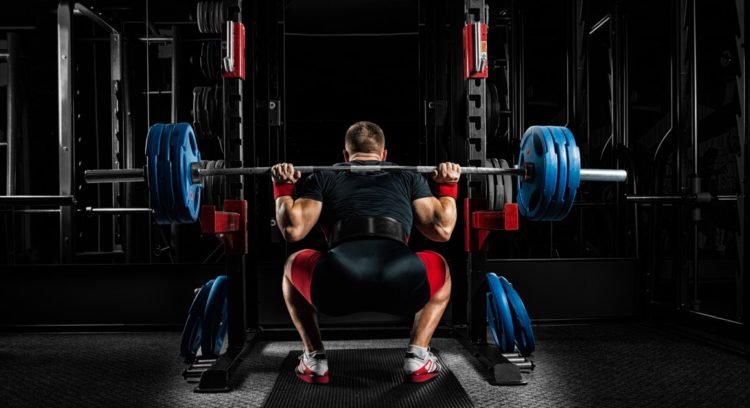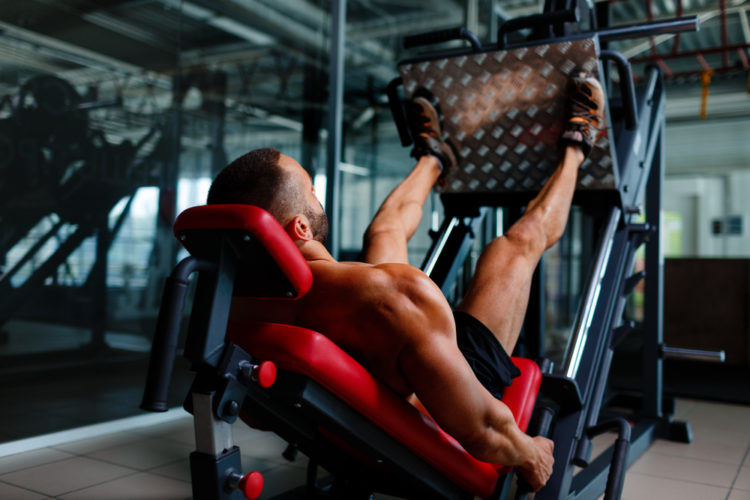In the world of research for strength & conditioning, we are off to an amazing start for 2020. Thus far, we’ve written on handfuls of studies published that have continued to push training guidelines, suggestions, and application even further. This is all phenomenal news for coaches and athletes that are constantly trying to tie the knot between experiential and evidence based best practices.
Last week, a study was published in the Journal of Strength and Conditioning Research that covered progressive resistance training volume and how it effected muscle thickness and strength in resistance trained individuals. (1)
This was an interesting study for a couple reasons. First, it utilized resistance trained individuals and only focused on lower body adaptations with the main differentiating factor being weekly volume in the form of sets. Second, it made some useful suggestions for programming acute 8-week hypertrophy mesocycles.

The Participants and Structure
For this study, authors had 35 resistance trained individuals complete the study (they started with 44, but finished with 35), and these individuals were split into three different training groups including: 12-set, 18-set, and 24-set groups. The groups were dictated by total weekly sets performed with the squat and leg press on a weekly basis, and each group lifted with the same intensities for each day.
For context, an example of the flow of the program for weeks 1-4 can be seen below,
Day 1
- 12-set: 3-sets squats 6-8 reps, 3-sets leg press 6-8 reps
- 18-set: 4-sets squat 6-8 reps, 5-sets leg press 6-8 reps
- 24-set: 6-sets squat 6-8 reps, 6-sets leg press 6-8 reps
Every group performed 2 x 4 with glute ham raises.
Day 2
- 12-set: 3-sets squats 12-15 reps, 3-sets leg press 12-15 reps
- 18-set: 5-sets squat 12-15 reps, 4-sets leg press 12-15 reps
- 24-set: 6-sets squat 12-15 reps, 6-sets leg press 12-15 reps
Every group performed 2 x 4 with glute ham raises.
Weeks 5-8 followed a similar format to weeks 1-4 above with the only difference being an increase in glute ham raise reps. Intensity was structured with a goal of 2-reps in reserve throughout working sets, then the final set was taken to concentric failure.
In order to participate in this study, subjects had to have three years of minimum training experience with the back squat and 1-RM testing, along with relative strength that equated to at least 1.5x their bodyweight.
Before and after the exercise intervention, every volunteer recorded multiple variables including their 1-RM strength, muscular endurance (reps to failure), lower body muscle thickness, and fat free mass. On a workout-to-workout basis, authors also asked subjects to provide overall RPE rating and their feelings about training sessions.

The Results and Suggestions
After the 8-week training intervention, authors saw multiple similarities between the three groups, however, there were a few discrepancies. Across the board, every group improved their 1-RM strength, but there was a slightly higher trend for growth with the moderate volume group that performed 18-set weekly sets.
In terms of lower body muscle thickness and fat free mass, every group saw similar changes with increased muscle thickness following the 8-week exercise intervention. There were no groups that significantly stood out when it came to a clear edge for muscle thickness increase.
What’s interesting about this study was that authors tried to find volunteers that had similar training backgrounds, a.k.a they tried to find subjects that trained with similar lower body weekly volumes heading into the study. The average amount of sets individuals performed pre-study was around 13 sets/weekly, and this brings up some great for food for thought, as 1/3 of the study’s population then actually decreased their weekly volume to 12 sets.
If we consider this, then it makes sense as to why the 18-set and 24-set group might have saw greater strength increases. After all, they increased the specificity of their lower body volume training for an acute period of time. However, despite this knowledge, authors still suggested that 18-sets, or a moderate training volume, seem to support better strength responses over an 8-week hypertrophic focused mesocycle.
Authors also suggest that volume should be programmed with a level of individuality, as athletes will respond to varied training volume differently. Generally speaking, experienced athletes can usually handle higher training volumes, so that’s a consideration to take into account for athletes and coaches programming for sport-specific goals and adaptations.
What Is Ideal Training Volume?
Training volume is interesting because its programming can be influenced by so many different factors such as time of season, individual athlete responses, training age, training history, and so much more.
This study was interesting because it provides us with more food for thought when it comes to utilizing and employing an ideal lower body training volume for certain populations, but again, ideal will always be multi-factorial.
If you’re interested in reading more research that has been published this year, check out of some of the other article we’ve covered below:
- Squat Versus Hip Thrust
- Squat Versus Step-Up
- Partial Versus Full Range of Motion Training
- How Much Training Is Enough to Increase 1-RM Strength?
- How Exercise Variation Impacts Body Composition, Motivation, and Strength
Feature image from Andy Gin/Shutterstock.